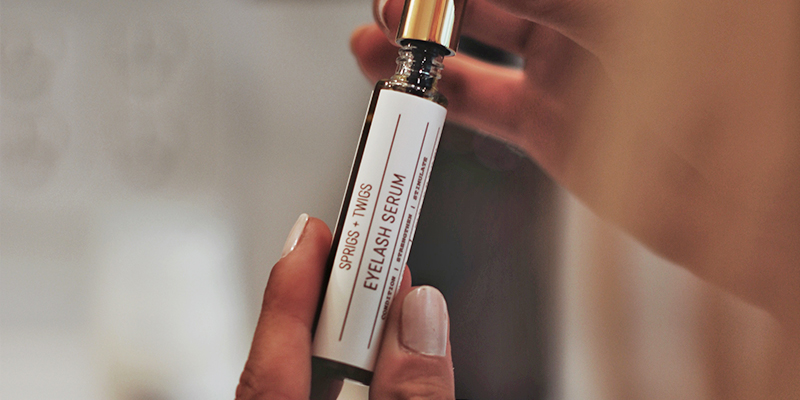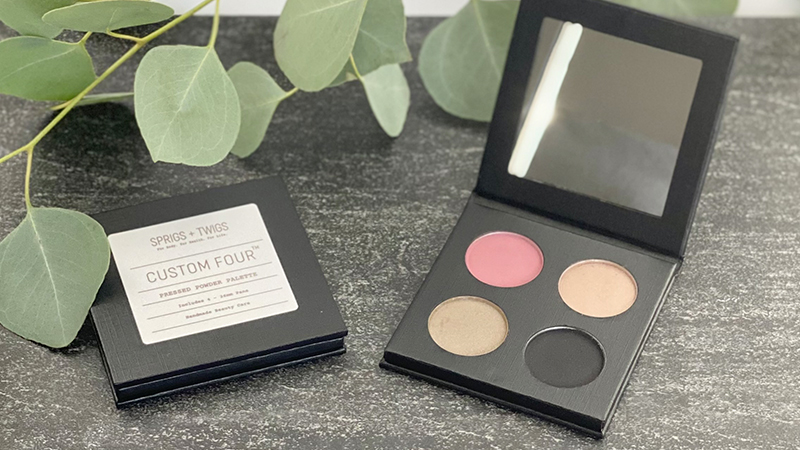Custom Cosmetic Labels That Sell: Tips for Beauty Brands
This entry was posted on August 07, 2025 .
Over 70% of shoppers say packaging design impacts what they buy. That means your cosmetic product label has to pull its weight, fast. It needs to look great, tell the right story, and follow the rules.
If your packaging looks off, your product probably won’t even make it into someone’s cart. Harsh? Maybe. True? Definitely.
Whether you're bottling serum or slapping labels on bath bombs, here’s how to create beauty product labels that actually work, and sell.


Design for Impact and Consistency
Cosmetic packaging needs to look polished, but consistency across your product line matters just as much as individual appeal.
For example, a natural skincare brand might use matte earth tones, serif fonts, and botanical illustrations across all SKUs to reinforce a clean, calming aesthetic.
Visual branding tips:
- Use consistent fonts, color palettes, and graphic styles across your labels.
- Make your logo prominent, but don’t let it overpower essential info.
- Opt for high-resolution imagery to avoid pixelation on small surfaces.
Pro tip: Consumers associate label quality with product quality. Use durable, professional materials like BOPP or vinyl to prevent fading or peeling.
Choose Label Materials that Perform
Want sustainable packaging? Start with your label. Options like recycled content materials or compostable stocks are gaining traction in clean beauty circles. Even choosing more durable, long-lasting labels can reduce waste over time.
Cosmetic products are often used in steamy bathrooms, tossed into handbags, or stored in sunlight. That means your label has to endure more than just shelf time.
Top materials for beauty product labels:
- White BOPP: Waterproof, oil-resistant, and ideal for creams and lotions.
- Clear BOPP: Great for a “no label” look, letting the product color show through.
- Chrome or holographic film: Eye-catching finishes perfect for standout packaging.
Permanent adhesives are standard for cosmetics, but always test compatibility with your container’s surface and shape.


Meet Cosmetic Product Labeling Requirements
No matter how good your label looks, it must meet FDA cosmetic labeling rules. Here's a basic breakdown:
Cosmetic product label must include:
- Product identity (what it is)
- Net quantity of contents
- Ingredient list (descending order of predominance)
- Name and place of business
- Any required warnings or directions
Layout rules:
- Principal display panel must be visible under normal conditions.
- Ingredient list and company info typically go on the information panel.
- Type must be legible and at least 1/16" in height.
When in doubt, request a cosmetic product labeling review to check compliance before printing. See the FDA Cosmetic Labeling Guide for full details.
Scale with Product Variations
Most beauty brands offer product lines with multiple scents, shades, or formulas. Printing different labels for each can become expensive or slow.
Smart label strategies for variants:
- Use a consistent base design and swap out key text (e.g., scent or color).
- Consider variable data printing to customize at scale without ordering separately.
- Leave space for batch codes or expiration dates to be stamped or printed later.
This approach speeds up reorders and reduces waste. For example, a lip balm line with 12 scents can share one core label template with small tweaks.
Add Functional Features
Form should meet function on your cosmetic product label.
Useful features to consider:
- Tamper-evident seals for lip gloss or skincare bottles
- Peel-back labels with extra space for directions or multilingual content
- Matte lamination to reduce glare and create a high-end texture
These details can enhance perceived value while serving practical needs.
Where to Go from Here
If you're reworking your beauty product packaging—or just want to ensure your labels hold up to real-world use, it's worth exploring material and design options that go beyond standard paper.
Lightning Labels offers waterproof, smudge-proof, and custom-cut cosmetic product labels that are built for both durability and compliance.
Whether you need small batches for seasonal scents or consistent runs for your core line, the options are flexible enough to match your pace and packaging style.
What information is required on cosmetic product labels?
You need product identity, net quantity, ingredient list, manufacturer details, and any necessary warnings. Labels must also meet layout and font size rules under FDA guidelines.
Can I print beauty product labels with different scents or shades?
Yes. Use variable data printing or modular label designs that keep your branding consistent while allowing key info to change.
What’s the best material for labels on lotions or creams?
White BOPP is ideal. It resists water, oils, and smudging, making it perfect for skincare and cosmetic use.
How do I know if my label meets regulations?
Conduct a cosmetic product labeling review—internally or with legal experts. Lightning Labels can also guide you toward compliant design specs.
Are clear labels good for beauty products?
Absolutely. Clear BOPP offers a sleek, minimal look and lets the product color show through, especially on glass or transparent packaging.
Can I add tamper-evident features to my cosmetic labels?
Yes. Options like perforated seals or shrink bands help build consumer trust and meet safety expectations.
Do small-batch beauty brands need to follow FDA cosmetic labeling rules?
Yes. Regardless of size, all cosmetic products sold in the U.S. must follow labeling regulations to ensure consumer safety and avoid penalties.

 Custom Labels
Custom Labels  Custom Beverage Labels
Custom Beverage Labels  Custom Lip Balm Labels
Custom Lip Balm Labels  Custom Warning & Safety Labels
Custom Warning & Safety Labels  Perfume Bottle Labels
Perfume Bottle Labels  Bumper Stickers
Bumper Stickers  Custom Prop 65 Warning Labels
Custom Prop 65 Warning Labels  Custom Stickers
Custom Stickers